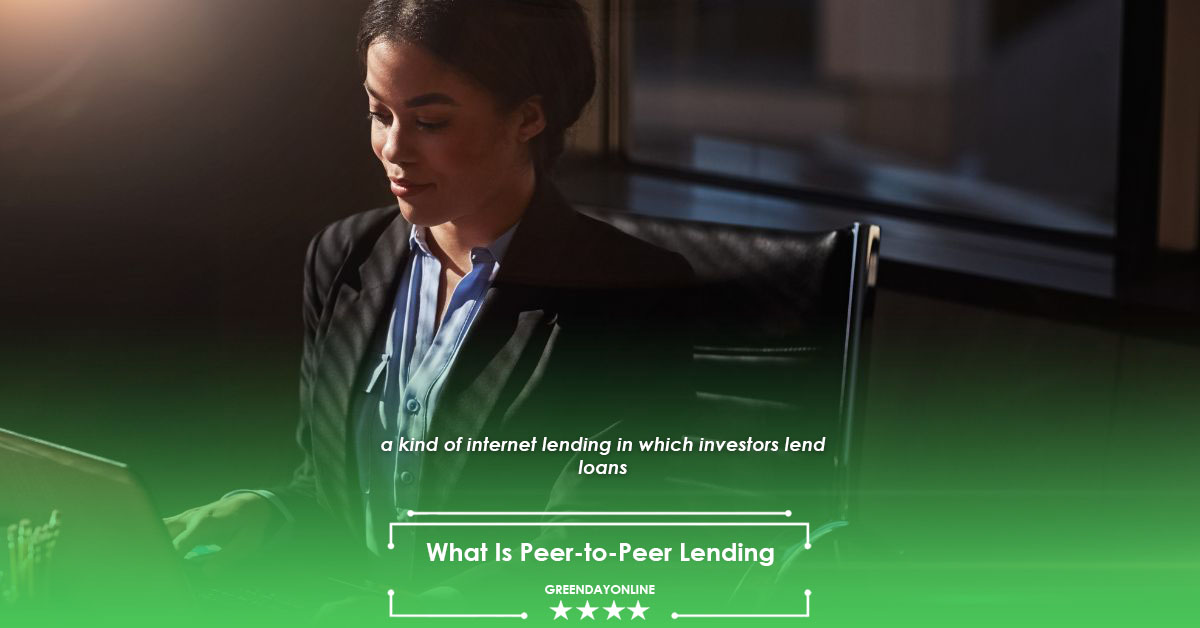Table of Contents
What Is Peer-to-Peer Lending?
Borrowers and investors are connected via peer-to-peer lending
Borrowers seek loans using peer-to-peer lending platforms, while investors choose loans that seem to be low-risk. An investor may finance all or part of a loan, or many loans. A large number of investors may be willing to lend money to debtors.
It’s a brand-new perspective on borrowing and lending. Borrowers may be able to get cash more quickly if conventional financial institutions such as banks are eliminated. Investors might also see a healthier return.
We’ll look at peer-to-peer lending systems and their operation.
What Is Peer-To-Peer Lending?
Peer-to-peer lending, or P2P lending, is a kind of internet lending in which investors lend loans (or parts of loans) to individual borrowers. Peer-to-peer lending often referred to as marketplace lending, is a kind of alternative financing to conventional loans.
This lending system can be beneficial for both lenders and borrowers. Some borrowers may be able to find personal loans that other lenders have denied them. Peer-to-peer lending services may be a viable alternative to payday loans or credit cards for certain people.
Your credit score may qualify you for a low-interest rate loan. However, those with poorer credit scores will almost certainly face higher interest rates – often much higher than the average credit card annual percentage rate.
Despite the danger, investors in P2P lending may get a higher return on their money than they would with some traditional savings and investment choices.
Additionally, loan platforms may assist small company owners. U.S. Peer-to-peer lending, according to the US Small Business Administration, might be a feasible option for small businesses seeking funding.
How Does Peer-To-Peer Lending Work?
For peer-to-peer lending, online software is used to link prospective borrowers with lenders. While features vary from one platform to the next, there are many commonalities. Peer-to-peer lenders include Prosper, LendingClub, and Peerform.
If You Need To Borrow Money, Here’s How It Works
- Completing an application, which may involve a credit check, is required.
- Examine the interest rate if you’ve been accepted. If you choose, you may go on to the fundraising step.
- Allow investors to see the loan listing before deciding whether to finance it.
- After your loan has been approved, you may begin the repayment process. You will make monthly payments during the length of your loan. Your payments will be shared amongst the lenders. They each get a percentage of your money.
If You Are Looking To Lend Money, Here’s How It Works
- Register on the P2P lending platform that interests you.
- Check out the loan options. LendingClub and Prosper will assign loans a grade to help you assess their risk. Auto investing is also possible.
- You can keep track of all earnings through your online account.
What Are The Fees Charged By P2P Lenders?
There are fees for both lenders and borrowers on P2P lending platforms. Before you sign up for a loan or give your money away, be sure you understand the conditions.
LendingClub charges an investment fee, approximately 1% of the total amount received during the grace period or before the payment due date.
If you’re a borrower, you could have to pay a cost called an origination fee.
What Are The Best Uses of a P2P Loan?
Many peer-to-peer platforms offer unsecured personal loans. You may put the money towards practically anything you choose. However, most lending platforms require you to specify the purpose of the loan.
According to LendingClub, the most popular reasons for borrowing money are debt consolidation, major purchases, home improvements, medical expenses, and mortgage repayments. LendingClub states that loan funds cannot be used to invest, pay for higher education, gambling, or any other illegal purpose.
Check out our selections for the four finest peer-to-peer personal loan lenders.
Is Peer-to-Peer Lending Safe?
Peer-to-peer lending may seem attractive — there are positive returns without the involvement of a bank.
Be aware that you could lose your loan if the borrower stops paying you through a P2P platform. The FDIC may not insure your P2P investments.
What’s Next?
Make careful to browse around and compare conditions before selecting if a loan from a peer-to-peer lender is good for you. Ask yourself some questions.
- Is it possible to repay the loan? Can I repay it?
- Can I find a better rate elsewhere?
- What is the time it will take to repay the loan? Is there a prepayment penalty?
These questions will help you determine if you are financially ready to borrow or lend through a P2P lending platform.
Tags
loan amount
lending club
loan term
borrower defaults
individual investors
top-rated online lenders
traditional bank
monthly loan payment
- Affecting Your Credit Score After Applying for Unemployment - Nov 30, 2022
- What Loan Options Are There With Bad Credit? - Nov 28, 2022
- What APR Means and How It Works? - Nov 25, 2022



